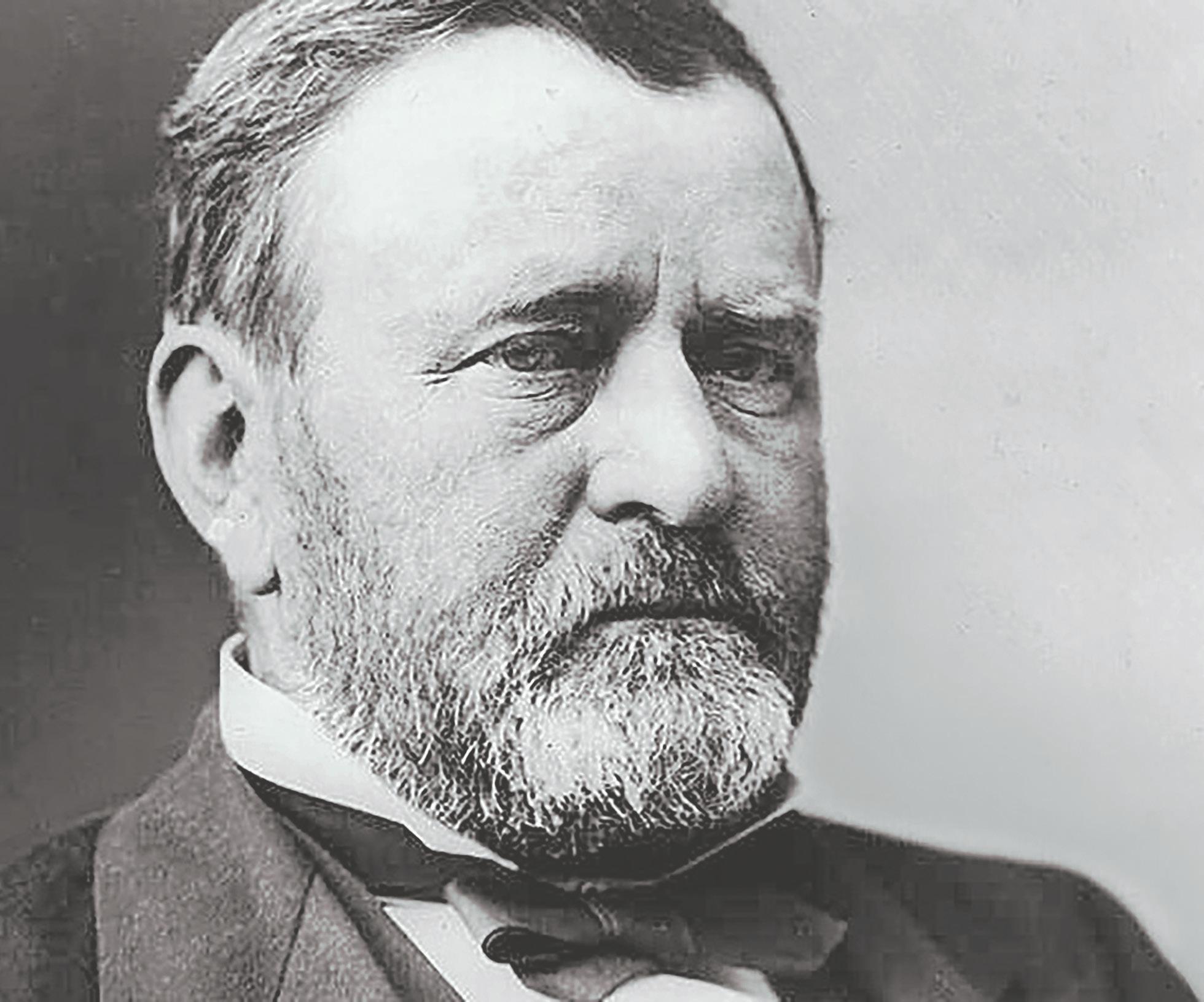
7 minute read
The Lincoln Funeral Car

By 1840 Abe and Mary Todd became engaged. Unfortunately, their mutual affections failed to last and by 1841, the engagement was broken, plunging Abe into a deep depression that rendered him unable to attend to his business or his job. In 1842 Abe and Mary had re-established relations and were married on November 4th of that year.
Following his marriage, Abe’s interest in politics continued to influence the course he would take in life. Despite entering a law partnership with Judge Stephen Logan, Abe made several unsuccessful attempts to gain the Whig nomination for congressman in the 30th District of Illinois. In 1846, however, Abe was finally nominated and elected in August of that year. Abe served one two-year term in Washington and was the only Whig representative in the Democrat-dominated Illinois delegation.
After this stint as congressman, Lincoln returned to Springfield with a new vigor to practice law. He “rode the circuit” twice every year for ten weeks, practicing law in county seats throughout the state of Illinois. Many of his cases involved disputes regarding the operations of barges, drawbridges, and railroads. He would argue cases in front of the Illinois Supreme Court some 175 times, and even argued a case in front of the United States Supreme Court. Of the 51 cases in which he was the only lawyer for a particular client, 31 of the cases were decided in his favor.

Late that year, Abe decided to run for the Illinois Senate seat as a Whig. The Whigs, at the time, were crumbling from the inside out. Differing opinions within the party concerning the Kansas-Nebraska Act threatened to tear the party in two, or, to obliterate it all together. Consequently, Lincoln lost the nomination, but became instrumental in the formation of a new party – the Republican Party. The Republican Party quickly gained influence and became a national political powerhouse by the time Lincoln would be elected president.
By 1860, the United States was in the midst of serious political turmoil. The issue of slavery threatened to rip the nation apart. The Democratic Party had been split into two factions, the Northern Democrats and the Southern Democrats. The Northern Democrats nominated
Stephen A. Douglas from Illinois for president, and the Southern Democrats nominated John C. Breckinridge from Kentucky. Douglas would become the first presidential candidate to “campaign,” by embarking on a national speaking tour. The newly formed anti-slavery Republican Party nominated Abraham Lincoln, a Representative from Illinois, legendary for his oratory. Lincoln won the nomination over three more well-known candidates, William Seward, Salmon P. Chase and Edward Bates, all of whom would become members of his cabinet. The Constitutional Union Party nominated John Bell from Tennessee.
On November 6, 1860, Abraham Lincoln was officially elected as president, despite the fact that he wasn’t even listed on the ballot in nine southern states. Because the bulk of the voting population lived in the Northern states, those states had higher electoral values. John C. Breckinridge won every southern state except Virginia and Tennessee. The results of the election brought the country to Civil War. South Carolina, whose voters believed that a Republican president would restrict slavery in the new territories, and then attempt to prohibit it completely, supported secession. They believed slavery was an American “institution,” and that their agricultural economy would collapse without it.

On December 20, 1860, South Carolina issued a Declaration of Secession from the United States. Ten other states would follow its lead within a few months. The new President had a mighty task of preserving a fractured Union. War was the only way.
As war approached, President Lincoln sent provisions to American forts that were now in Confederate territory, including Fort Sumter, near Charleston Harbor, South Carolina. Secessionists in South Carolina considered this an act of war and began bombarding the fort on April 12, 1861. Union forces at Fort Sumter surrendered and thus, the American Civil War began. On April 15, Abe requested the mobilization of 75,000 troops from the states for the purposes of “preserving the Union.” In the following days, North Carolina, Tennessee, Arkansas, and Virginia seceded from the Union, refusing to mobilize against their southern neighbors. The secession of Virginia, one of the most populous states in the country, was a major prize for the Confederacy. To reward it, the Confederate capital was moved from Montgomery, Alabama to
Richmond, Virginia.
From the time the war had started, Lincoln had wrestled with himself and members of his cabinet concerning the proper timing of emancipating slaves in the South. With the momentum of the war swinging back to the Union, and on the heels of the major victory at Antietam, Lincoln issued the Emancipation Proclamation on September 22, 1862 to be effective on January 1, 1863. The decree freed all slaves in “enemy territory.” The proclamation, however, failed to address slavery in the border states. Lincoln believed forcing the border states of Kentucky, Maryland, Delaware, and Missouri to free their slaves would push them to join the Confederacy. Slavery was ultimately abolished in the United States with the ratification of the Thirteenth Amendment in December of 1865.

On April 9, 1865, the Confederate States of America surrendered at Appomattox Courthouse, Virginia. The Civil War was over and the Union would be preserved. At this point, President Lincoln had to consider the complicated task of reconstructing the Union and how to re-integrate the Confederate states back into the United States.
Lincoln believed in a policy of forgiveness and took a moderate approach to reconstruction, hoping to reconstruct the Union as quickly as possible rather than indefinitely punish the rebel states. Unfortunately, the President did not have much of a chance to preside over Reconstruction. Just five days after the end of the war, Southern sympathizer and actor John Wilkes Booth assassinated the President while he was watching a play at Ford’s Theater in Washington, D.C. Lincoln’s bodyguard had apparently fallen asleep, allowing Booth access to the Presidential box. Lincoln died at 7:22 the next morning at the Peterson House across the street from the theater. Upon his death, Secretary of War Edwin M. Stanton uttered the timeless words “Now, he belongs to the ages.”
Andrew Johnson was the 17th president of the United States. He was born in Raleigh, North Carolina, in 1808. He was born into poverty and ran away to Tennessee at an early age. After starting his own tailor shop, he married Eliza McCardle. He soon entered politics and became known as an adept speaker. He frequently spoke against the Southern aristocracy and was an advocate for the common man and poor farmer.
Johnson was elected to the House of Representatives in 1835, and later, to the Senate in 1841. In 1853, Johnson became governor of Tennessee. He then served as a Democrat in the United

States Senate until 1862. During secession and the Civil War, Johnson was the only senator from a seceded state that continued to participate in Congress. President Abraham Lincoln appointed him military governor of Tennessee after the state fell into Union hands, and he became Lincoln’s vice president in 1864. After President Lincoln was assassinated in 1865, Johnson was sworn in as America’s 17th president.
During his term in office, Johnson presided over Reconstruction, the period after the Civil War in which the Southern states were reintegrated into the Union. Johnson and Congress argued over the specifics of Recon- struction. Johnson favored a quick restoration of rights and privileges, whereas Congress favored a more gradual approach. Tensions grew when Johnson replaced Secretary of War Edwin M. Stanton. Republicans claimed Johnson violated the newly passed Tenure of Office Act. The House of Representatives passed a resolution to impeach Johnson. Although he was acquitted (19 votes to 18), he was the first president to be impeached.
Ulysses Simpson Grant was born April 26, 1822, in Point Pleasant, Ohio. Against his father’s wishes, Grant entered the US Military Academy and finished in the middle of the class. Like most military school graduates at the time, Grant was sent to Mexico and served under General Zachary Taylor during the Mexican War. In other endeavors before the Civil War, Grant was unsuccessful.
At the outbreak of the Civil War, Ulysses S. Grant was working at this father’s leather shop in Illinois. He was appointed by the Illinois governor as the commander of a local militia but soon rose to the rank of brigadier general in the Civil War. Grant’s aggressive and bold tactics were a major reason why the Union Army was able to defeat the Confederates. His campaigns in the Mississippi River Valley were legendary and crucial to Union victory. In 1862, Grant led his forces to victories at Fort Henry and Fort Donelson in Tennessee. At Fort Donelson, Grant earned the nickname “Unconditional Surrender Grant.” Though less successful at Shiloh, Grant’s leadership opened the way for Union occupation of the Mississippi River. Grant went on to take the key port city of Vicksburg and then broke Confederate ranks at Chattanooga.
In 1864, President Lincoln named him general in chief of the Union army. Grant’s “Overland Campaign” at such battles as Wilderness, Cold Harbor, and Petersburg took a heavy toll on Lee’s Army of
Northern Virginia, despite the heavy casualties inflicted upon his forces. Lee’s weakened forces held the Confederate strongholds of Petersburg and Richmond for ten months before being overwhelmed by Grant’s forces. On April 9, 1865, Ulysses S. Grant received
Lee’s surrender and the Civil War was over.
In 1869, Grant was elected president of the United States. Unlike his military campaigns, his presidency was less than successful and plagued by corruption. Although he presided over Reconstruction in the South, Grant was seen associating with prospectors who tried to corner the market in gold. When he realized their plan, he authorized the Treasury to sell enough gold to ruin the plan, but the damage had already been done to business. After the presidency, Grant joined a financial firm that ultimately went bankrupt. In 1885, he died of throat cancer shortly after writing his personal memoirs. His works ultimately made $450,000 for his family. Grant is currently honored on the fifty-dollar bill of the United States.











